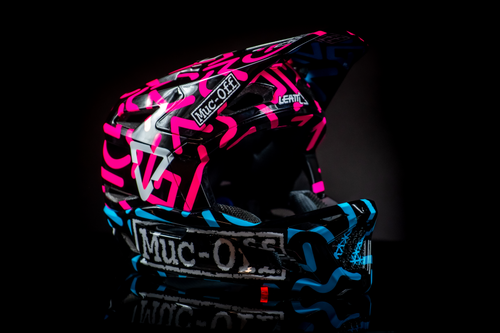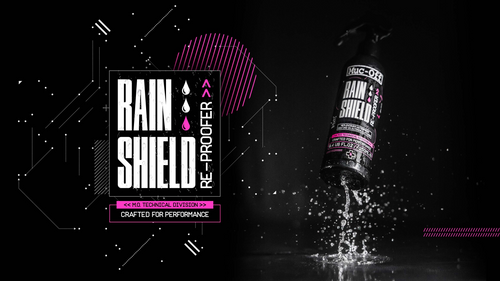Ludicrous AF: The world’s fastest race lube. A bold name and a bold claim. But not one that we make lightly!
The development process for Ludicrous AF officially started three years ago, but in truth, it’s roots can be traced back to 2005, to the development of our very first lube. This latest iteration is the distillation of the knowledge we’ve gained throughout our 16-years of experience in Tribology - which for those of you that didn’t know, is the study of friction, wear, and lubrication, and the science of interacting surfaces in relative motion.
When it comes to creating the world’s fastest lube, testing progress during the development phase is key.
Now, there’s currently no agreed industry standard for testing lubricants, so we've taken it upon ourselves to carry out broad range of robust tests, to produce a series of charts and data that you can take confidence in.
Broadly, our testing falls under three main categories:
In-house testing: Using state-of the-art equipment and industry leading tribologists
Independent testing: Using New Motion Labs, experts in high accuracy, multi-torque transmission efficiency testing
Real-world testing: Using world-leading professional race teams such as INEOS Grenadiers, EF Education-NIPPO, BMC Pro-Triathlon, Canyon//SRAM, and many more to put the lube through its paces
In this article, you'll find a summary of our testing processes and protocols, including charts and graphs detailing data we gathered during the development of Ludicrous AF.
In-house testing:
We begin the development process with an in-house screen-test. We took over 30 race lubes and ran them all on our dynamometer. This device is replicative of a bicycle drivetrain, which has a drive motor that turns the chainring. It enables precise measurement of frictional power loss, allowing us to narrow down the top performers, and identify those which warrant going through for further in-depth analysis. From this screen test, Ludicrous AF, AbsoluteBLACK GRAPHENlube, Silca Synergetic Drip Lube and CeramicSpeed UFO Drip were identified as the fastest four lubes from all that we tested.
We then completed two sets of tests, again on our dynamometer: A two-hour test on new chains, and a two-hour test on chains which had been run for 6-hours at 300 watts. As you will see in the graphs, in both tests, Ludicrous AF was the fastest – We’ve also included the percentage differences in power loss between Ludicrous AF and the other three lubes.


Testing then moved over to our in-house tribo-lab. This quarter-of-a-million-pound machine, replicates friction-inducing motion in a way that is infinitely controllable and allows for class leading testing and analysis. The mechanical contacts that occur in a bicycle drivetrain can be isolated and reproduced in every dimension, to test their interaction with a lubricant and its effectiveness. Our test, which conformed to the bicycle specific protocol developed with NPL (National Physical Laboratory), found that as with the dynamometer results, Ludicrous AF delivered the best performance, exhibiting the lowest Coefficient of Friction.
Understanding how Ludicrous AF performs in terms of wear is also critical, as riders’ demand a balance of speed and durability. Once again using our in-house tribo-lab, adhering to the ASTM G133 standard testing protocol, we completed wear analysis across our focused competitor group.
These graphs show Ludicrous AF providing the lowest volume of wear, crucial in preserving the life of both chains and groupsets. The first graph shows the full set of results, but due to the wide spread of data, we are also showing a focused view to show the visible comparison between Ludicrous AF vs Silca Synergetic Drip Lube.


Independent Testing:
Following all our in-house testing, we sought out independent testing by New Motion Labs, a high accuracy, multi-torque transmission efficiency laboratory, to provide us with a broad set of objective results.
They ran tests to measure overall efficiency, completing an absorbing power test across a range of loads (100 – 1100 watts) and cadences (60 – 140rpm). The chart shows that Ludicrous AF was the most efficient (fastest) across all loads and cadences. We have included the data showing Ludicrous AF after three hours of conditioning at 300 watts, to illustrate the positive impact chain conditioning has on efficiency.
The testing can also be represented in the form heatmaps. Here we’ve included the wattage efficiency data for each lube tested. You may not be familiar with these charts, but essentially the darker the colour, the higher the efficiency, ranging from blue (low efficiency) to dark red (high efficiency). Larger regions of red = A more efficient chain. You will also see the associated power input, represented here by the curved white lines. Therefore, if you know your own personal torque, cadence and power inputs, you can actually use these charts to plot how efficient your chain actually is using different lubes.

As with the previous data, Ludicrous AF delivers the highest levels of efficiency, but what’s important here is that the efficiency over-indexes at the highest levels of the wattage range (500 and above). It’s for this reason that we see the likes of INEOS Grenadiers, EF Education-NIPPO, BMC Pro-Triathlon, Canyon//SRAM, and Team GB running Ludicrous AF on their bikes, as these riders regularly produce these wattage levels, for large portions of their races.
The comparison between Ludicrous AF and the other lubes is best illustrated in this graph.

Real World Testing:
Beyond all the lab testing, which provides a huge amount of insight into a lube’s performance, we also complete a series of real world tests, so we can further understand performance.
We applied all four lubes to a chain and took them out on a three-hour road ride. We’re aware of the limitations of this test, as there are a number of variables which can skew the results. We ensured that route, weather, and componentry, remained consistent for each ride-out, to give us the most like-for-like results possible. Ultimately there is no way of running this test to 100% accuracy, and it should very much be considered as part of the overall testing program, rather than something against which we are solely stake our claim.
Following the ride-outs, each chain was then run for an hour on the dynamometer, with measurements of power loss being recorded. This is displayed on the graph, which once again shows Ludicrous AF delivering the lowest levels of power loss.
As important as speed is when developing a race lube, consistency of results can be considered equally important.
The charts below show wattage loss from World Tour race chains #994 and #997 - Teams and riders are not identified due to competitive confidentiality. Both graphs show two rounds of chain optimisation on two different riders and chains.

The shape of the charts highlights two things: First, the efficiency benefits of repeated chain optimisation, but secondly, the repeatability and consistency Ludicrous AF delivers. The two sets of data are virtually identical, meaning the lube and therefore the chain, delivers predictable and consistent results. This is crucial for the pro-teams chasing marginal gains – being able to accurately predict the performance of a lube time and time again gives the riders and the team confidence that they can rely on the product; allowing them to focus solely on delivering a great performance on the road irrespective of weather and temperature conditions.
The final graph shows chain power-loss data from a pro-triathlete through time. When competing at the highest level, drivetrain optimisation is an essential part of the winning formula. As shown here, the original chain was assessed to create a baseline of data and a new chain was supplied and given a base treatment. Following subsequent races and Ludicrous AF treatments, we were able to reduce wattage loss each time, highlighting the compound effect of repetitive chain optimisation, and how it leads to the chain getting faster every time, and highlighting that a new chain isn’t necessarily a fast chain.

The combination of robust, in-house testing methods on state-of the-art equipment, with independent and real-world testing data, allows us to say with confidence that Ludicrous AF truly is the world’s fastest race lube.
We know this article contains a huge amount of testing data, which for some can be complex and difficult to understand. The fact that there is no agreed industry standard for testing lubricants means riders can often be left confused about which lubricant will deliver the best results for them – Here at Muc-Off, we want to see that change!
So, over the coming months, we’re embarking on a mission, to work with other lube manufacturers in the industry, to join forces and work to create a standardised industry testing protocol, for us all to follow. We’re hopeful that this will lead to greater innovation in the market, and ultimately give riders’ more transparency and understanding of the products they’re putting on their bikes.
If you’d like to experience this pro-level innovation for yourself, grab yourself your very own bottle of liquid lightning right here. We're confident it'll stand up to the test.
We have also created a brand new performance hub so that you can dive into all things Muc-Off performance. Check it out here.






 Muc-Off UK
Muc-Off UK
 Muc-Off EU
Muc-Off EU
 Muc-Off US
Muc-Off US
 Deutsch
Deutsch
 Espanol
Espanol
 Francais
Francais
 Italiano
Italiano
 Nederlands
Nederlands
 Polski
Polski






